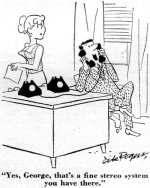The optocoupler forms a feedback network around the output stage. The LED portion has a forward drop of about 1.2 Volts but if we direct connected this it would burn up. The 100 Ohm limits the LED current and the led controls the transistor half to set the bias by decreasing the excess bias voltage in the 10K Ohm resistor network. If you pulled out the 100 Ohm the output source resistors would burn up. A cap across the LED helps extend the class A bias into low impedance at high levels although for headphones it isn't really needed.
> A cap across the LED helps extend the class A bias into low impedance at high levels although for headphones it isn't really needed.
That depends on what phone you have.
There is no downside to the cap.
Patrick
That depends on what phone you have.
There is no downside to the cap.
Patrick
It will do better than 300mW into 32R. (More with the cap... 🙂 )
More than enough power to go deaf with Grados.
More than enough power to go deaf with Grados.
I had a chance to try some different combinations today -
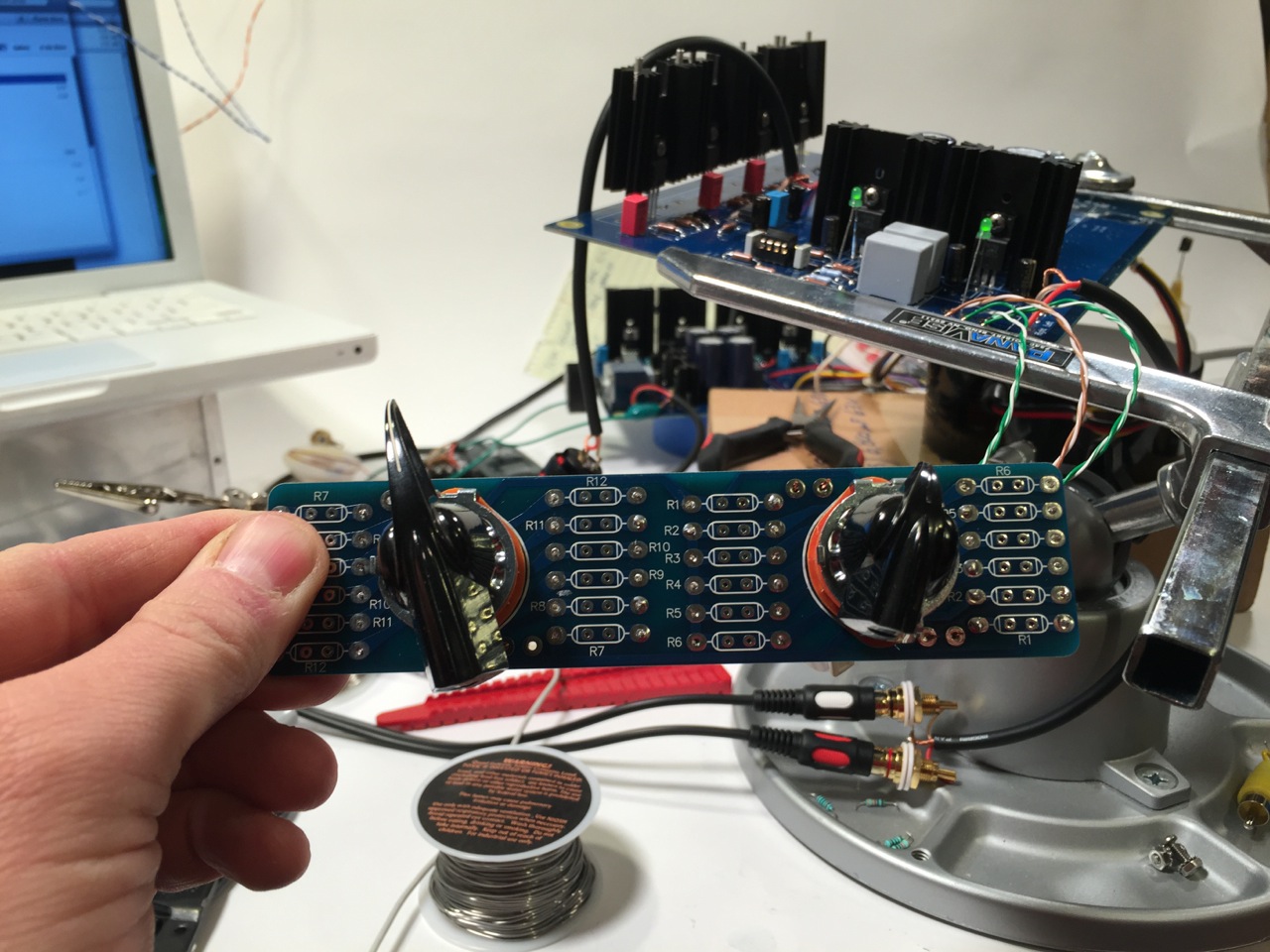
This is a John Broskie (TubeCad.com) A5 stereo stepped attenuator. It's wonderful! I've been wanting to see how its configuration works (one knob for big jumps in volume, one knob for fine changes) --- I love it!
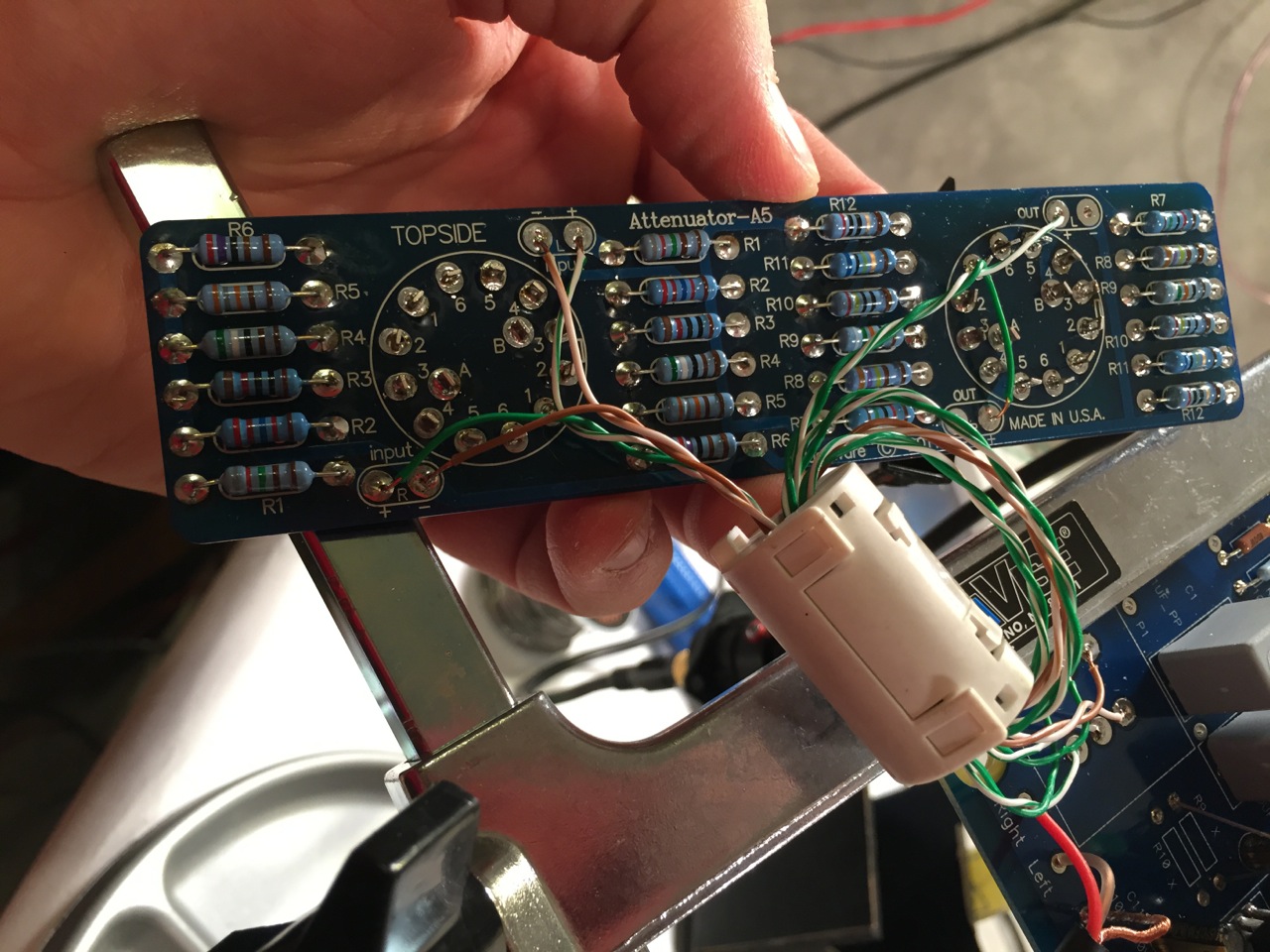
The resistors can mount front or back. (The ferrite clamp is just insurance that the flying leads don't turn into RF antennas.)
I removed the darlington transistor experiment and replaced them with the Mosfet the amp is designed around - the Toshiba 2SK2013/2SJ313. Fantastic! Sounds much, much better.
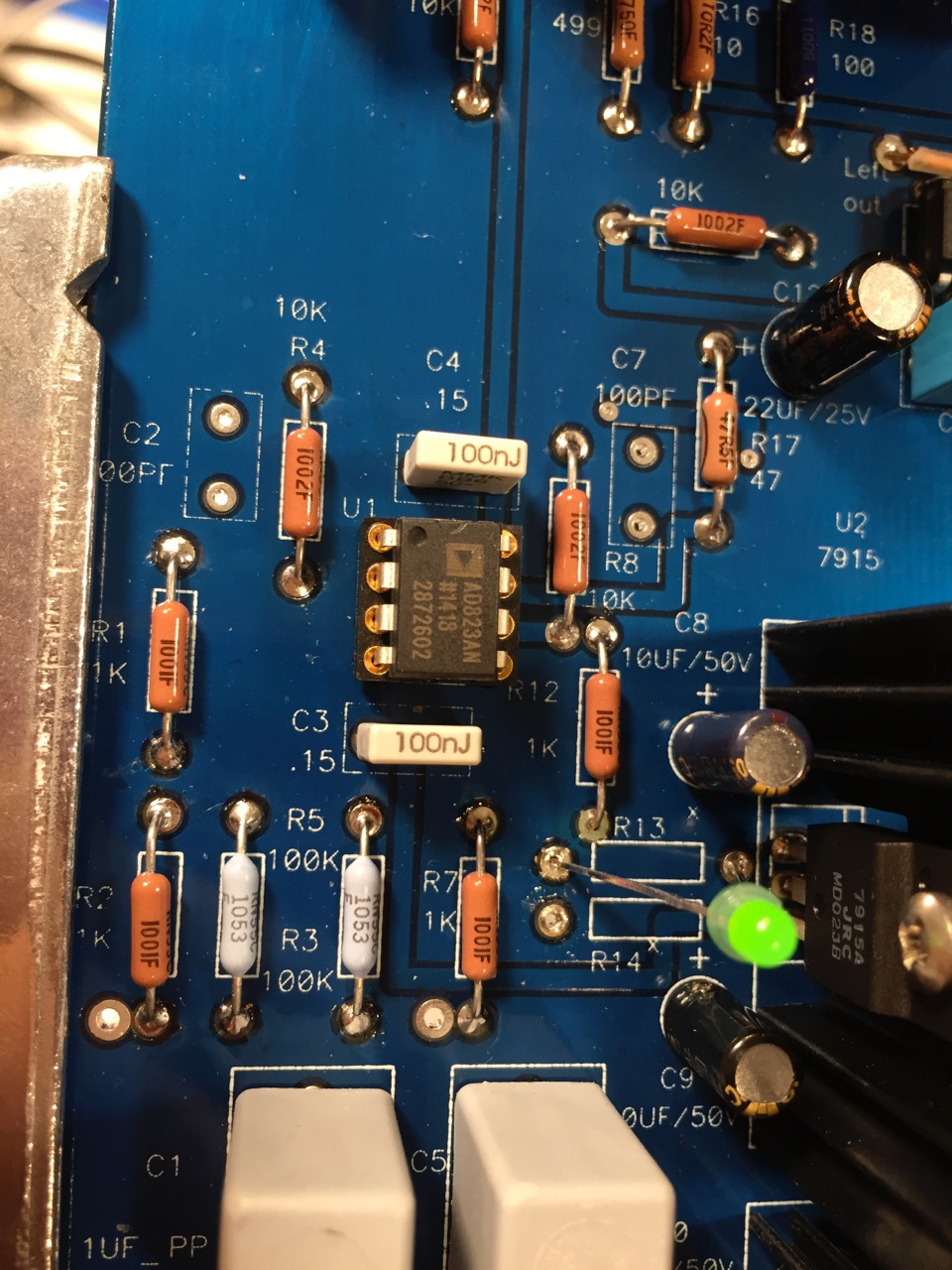
A new opamp to try - AD823AN I really like it. Sounds fantastic, but more importantly the DC offset on the amp output is vanishingly, amazingly low. Low as in 2mV!! Because the amp is DC coupled, the opamp is responsible for 99.95% of the offset. Some other opamps ave caused the offset to be as high as .2V 😱
In the revisions something will be added to the circuit to help control output offset if needed.
I haven't yet received the PCB-mount transformers, (hopefully will arrive tomorrow) so I've been powering this with a huge 22v+22v, 120VA transformer! Lol. And listening to it with everything flying and the PCB mounted in this vise. 😀😀😀

This is a John Broskie (TubeCad.com) A5 stereo stepped attenuator. It's wonderful! I've been wanting to see how its configuration works (one knob for big jumps in volume, one knob for fine changes) --- I love it!

The resistors can mount front or back. (The ferrite clamp is just insurance that the flying leads don't turn into RF antennas.)
I removed the darlington transistor experiment and replaced them with the Mosfet the amp is designed around - the Toshiba 2SK2013/2SJ313. Fantastic! Sounds much, much better.

A new opamp to try - AD823AN I really like it. Sounds fantastic, but more importantly the DC offset on the amp output is vanishingly, amazingly low. Low as in 2mV!! Because the amp is DC coupled, the opamp is responsible for 99.95% of the offset. Some other opamps ave caused the offset to be as high as .2V 😱
In the revisions something will be added to the circuit to help control output offset if needed.
I haven't yet received the PCB-mount transformers, (hopefully will arrive tomorrow) so I've been powering this with a huge 22v+22v, 120VA transformer! Lol. And listening to it with everything flying and the PCB mounted in this vise. 😀😀😀
Two stepped attenuators to control the volume?
I've seen these boards for sale on the Glass Audio website, but I didn't understand how they worked.
I find most stepped attenuators don't allow enough adjustment range from one step to another.
Turn em' up one more step and the sound is usually way too loud.
Does this setup do the same?
Will some type of servo be on the revised boards to help control DC offset?
Thanks...
I've seen these boards for sale on the Glass Audio website, but I didn't understand how they worked.
I find most stepped attenuators don't allow enough adjustment range from one step to another.
Turn em' up one more step and the sound is usually way too loud.
Does this setup do the same?
Will some type of servo be on the revised boards to help control DC offset?
Thanks...
The attenuator has 2 knobs, one for big (6db) steps and the other for 1db steps. In general it has lots of fine resolution. Better than a more typical 24-step switch.
I don't know if it's going to be a servo or something more simple.
I don't know if it's going to be a servo or something more simple.
Yay! Parts arrived.
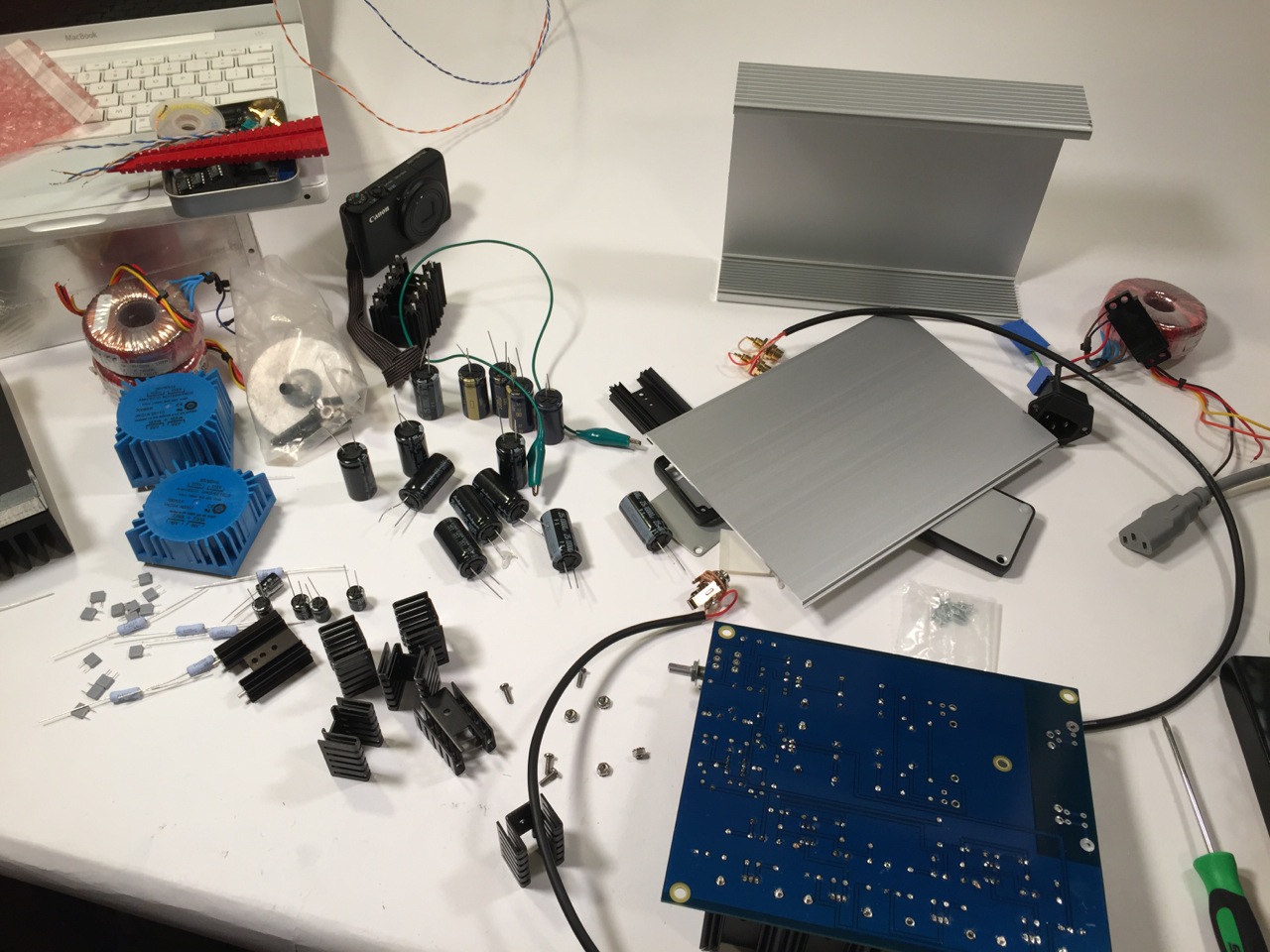
Lots of stuff to try.
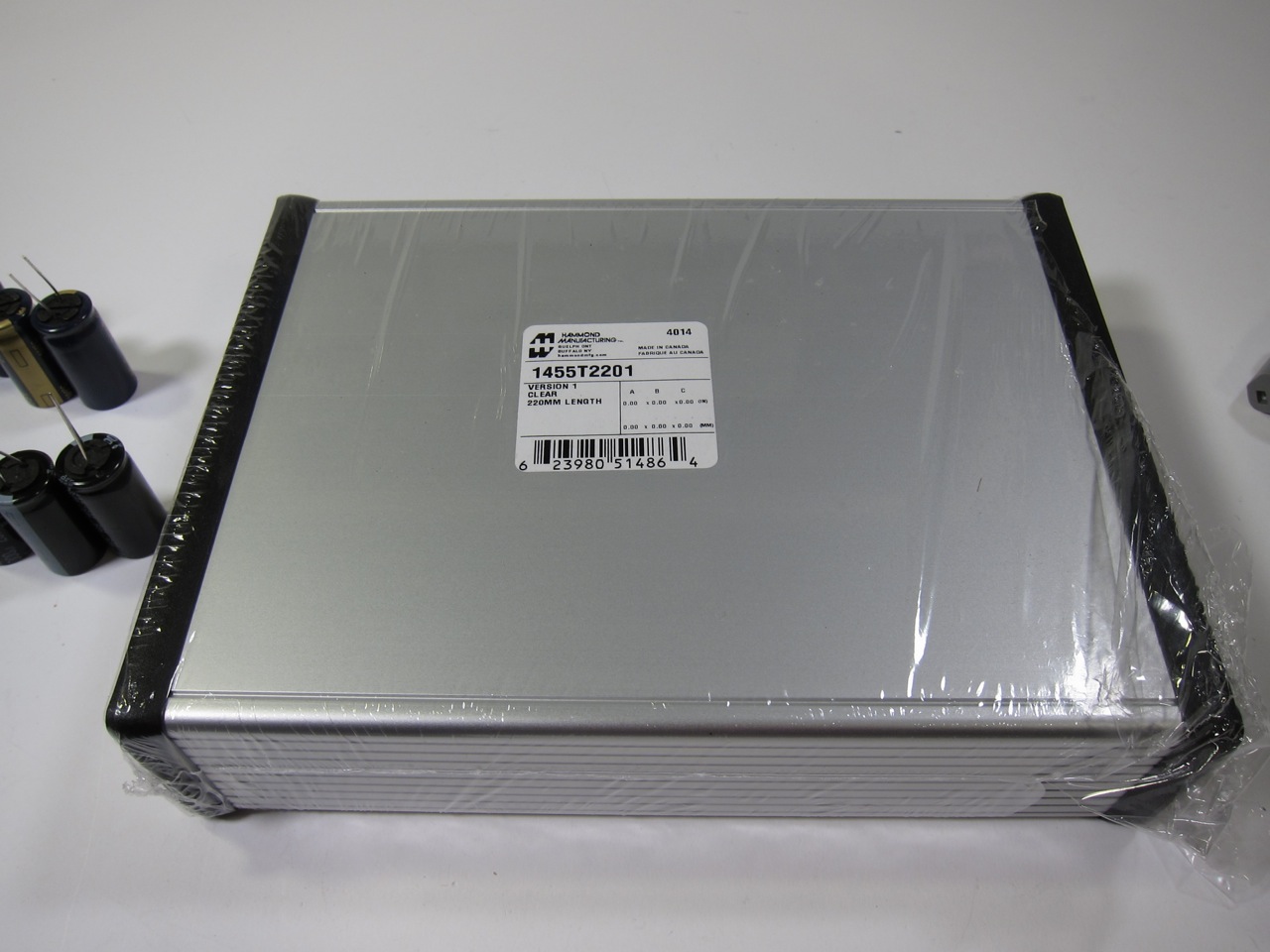
The PCB just happens to fit this case. 🙂 🙂 🙂
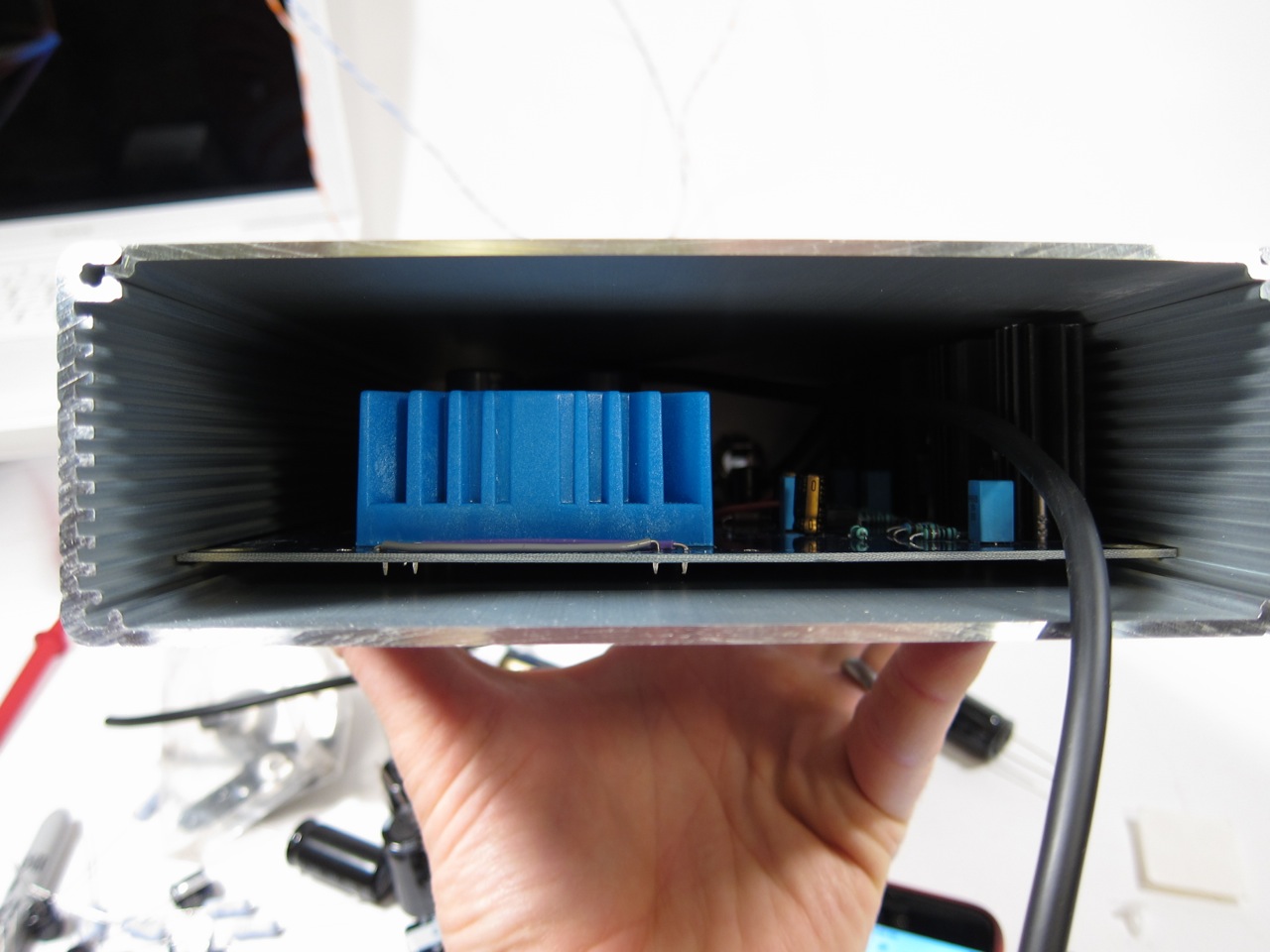
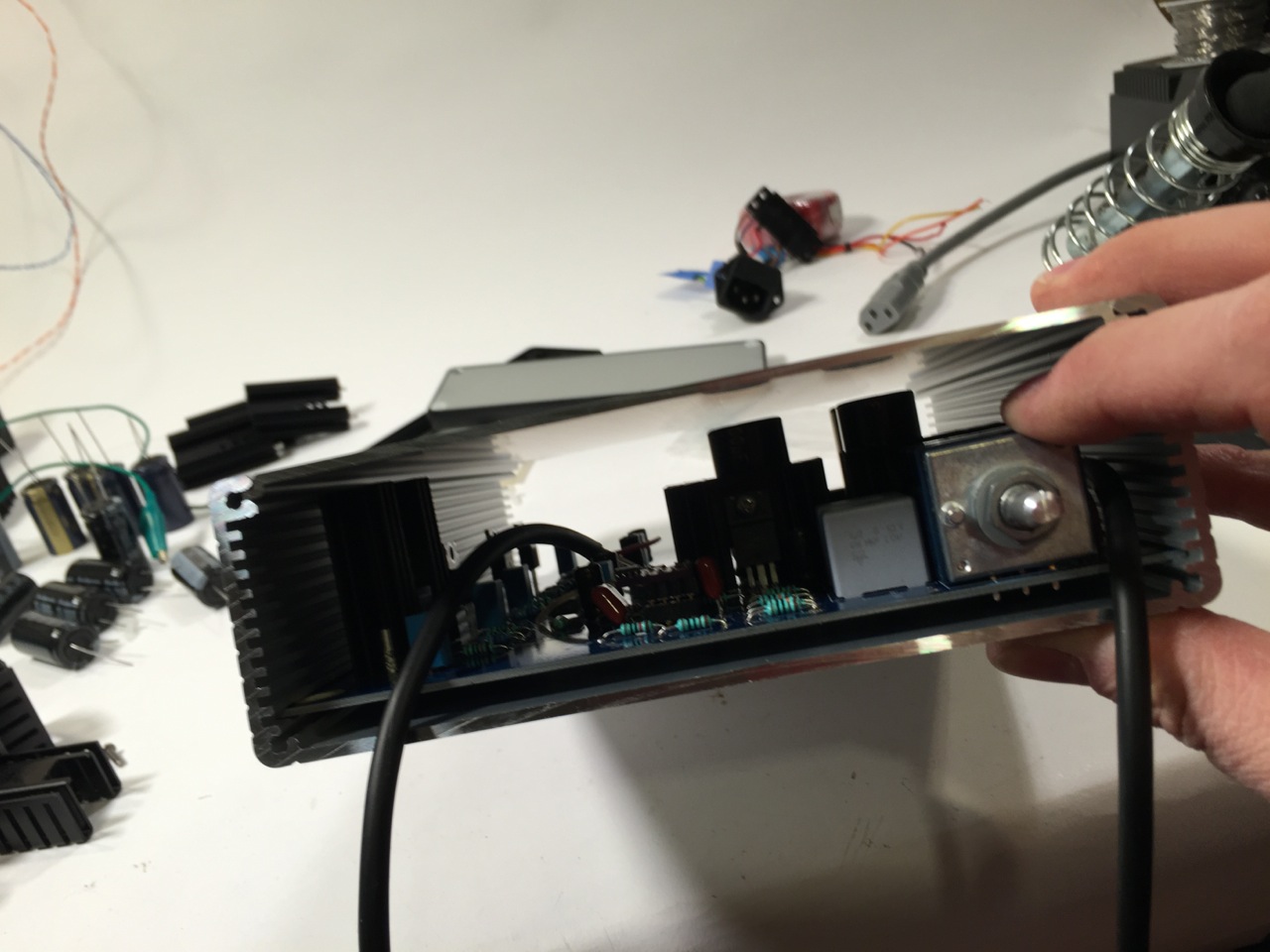

Laying out front panel

The open hole is for a power switch I thought I had. Must have used it elsewhere.
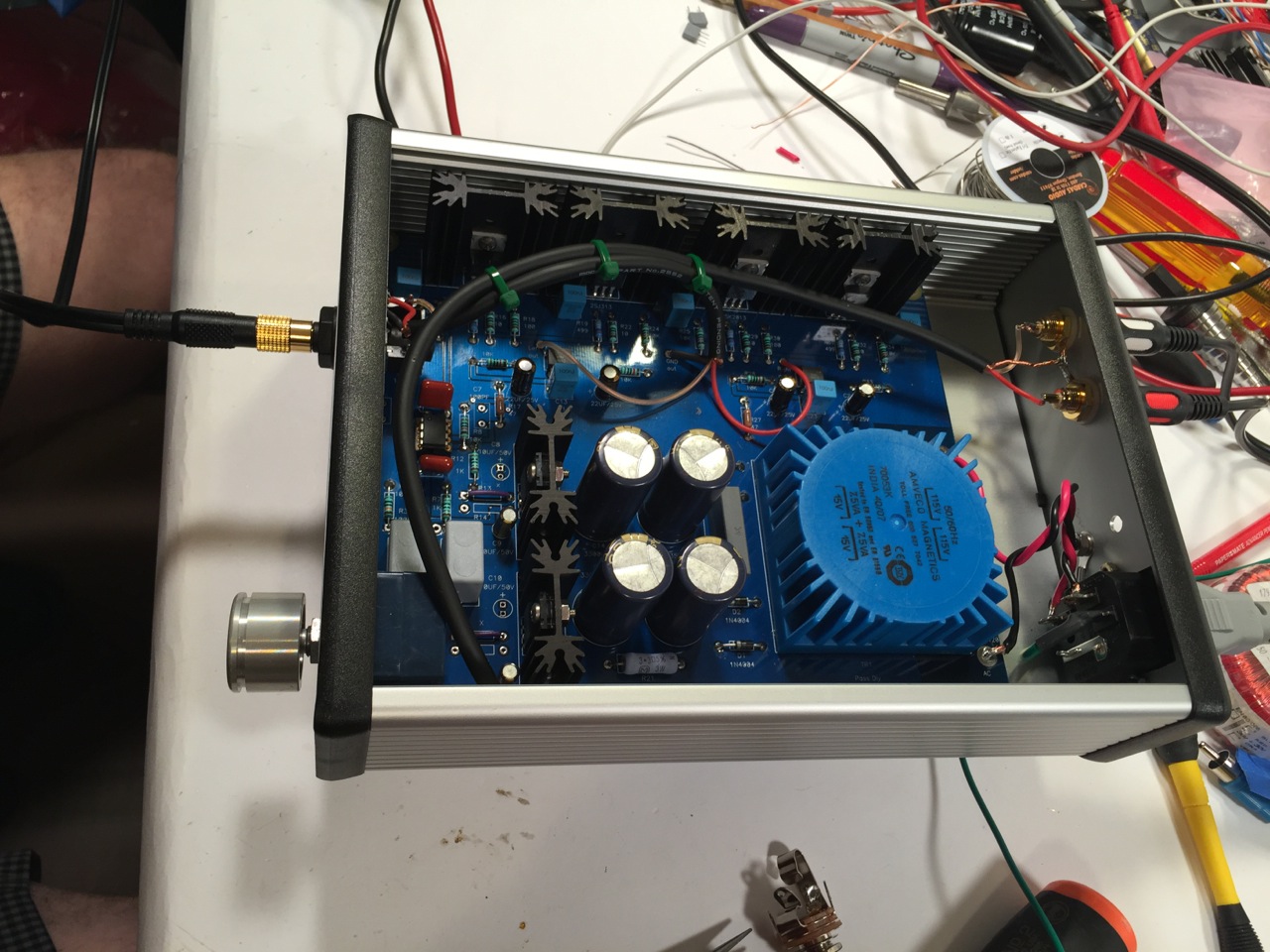
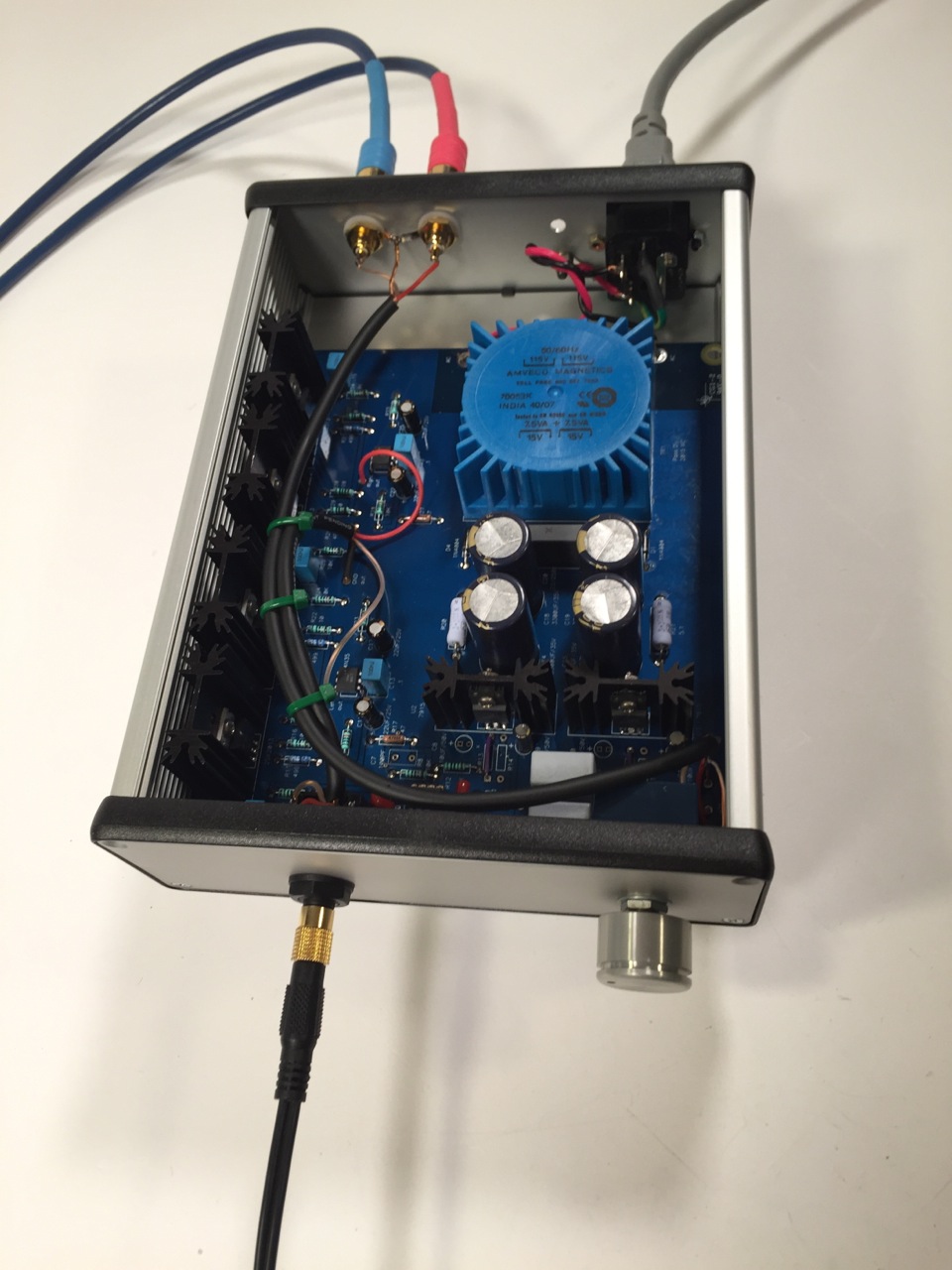
This is looking pretty darn close to complete.

Next in the queue to try. 🙂

Lots of stuff to try.

The PCB just happens to fit this case. 🙂 🙂 🙂



Laying out front panel

The open hole is for a power switch I thought I had. Must have used it elsewhere.


This is looking pretty darn close to complete.

Next in the queue to try. 🙂
Honestly, with 15V rails it's not that hot.
17V rails, and with 22v+22v transformer, there is more heat.
Vent holes in this chassis may be a very good idea.
17V rails, and with 22v+22v transformer, there is more heat.
Vent holes in this chassis may be a very good idea.
I have mixed feeling about this one. On one hand we have a great beginner project, that'll be supported by whole community, it is going to be easy and great sounding(come on, papa did it, right?). However optocoupler bias is cool and fresh, opamp input stage and 317 PS? It feels a little disappointing for me.
Still subbed, cheers
Mike
Still subbed, cheers
Mike
It feels a little disappointing for me.
No one project on here is going to satisfy everyone.
I personally wouldn't knock something that I haven't even tried, but that's just me.
At least it doesn't use a bunch of TO-92 transistors that have to be "carefully matched" for best sound and/or lowest offset.
Thank you Wayne for investing your time in a project for us! And you as well Jim! I'm going to build it, and be happy. And grateful. And appreciative. Above all it'll be fun!
Cody
Cody
No one project on here is going to satisfy everyone.
I personally wouldn't knock something that I haven't even tried, but that's just me.
At least it doesn't use a bunch of TO-92 transistors that have to be "carefully matched" for best sound and/or lowest offset.
no, but its incredibly satisfying matching parts, I just did a whole bunch of trannies and jfets for a Dynalo. Cant wait to fire it up, I need to get a few pots🙂
You guys got the worng feeling about my post(or is it my english). I'm saying, that this is a great project for sure, I was just saying, that I would like to see some other solutions thats all 🙂
no, but its incredibly boring matching parts, I just did a whole bunch of trannies and jfets for a Dynalo. Cant wait to fire it up, I need to get a few pots🙂
FTFY 😉
/U.
no, but its incredibly satisfying matching parts
Glad you find it "incredibly satisfying".
I'd rather be melting some solder.🙂
Hopefully, 6L6 will have some updates in the next day or so.
- Home
- Amplifiers
- Pass Labs
- New PassDIY Headphone Amp (now available)

